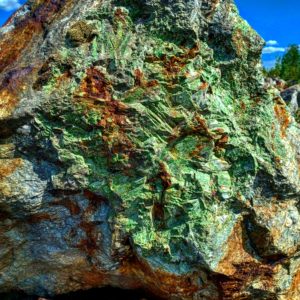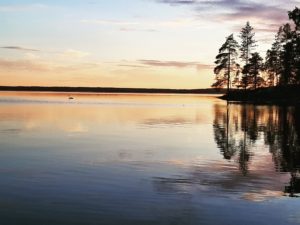Differences between Geology and Fieldwork in Greece and Finland: From observing outcrops while swimming at the beach to discovering them while lost in the forest
Nikos Karampelas started working as a summer trainee geologist for GTK and finding hidden rocks in Finland has made him think about how different – and similar – his homeland Greece and Finland are. Even for a geologist, geological time feels hard to comprehend, and unravelling the mysteries of the earth feels exciting every time.
I am well aware that this title seems a bit exaggerated but allow me to explain myself. My name is Nikos and I am a summer geologist for GTK. This is my first summer working for the agency and actually, it is the first summer I am working as a geologist in Finland overall. This has been a great opportunity for me to enjoy Geology, the science I love, but of course I couldn’t help but notice how differently it is performed here than what I used to do in my homeland.
I believe that the first signs of this difference appeared already much before I started working, while I was taking a course on mineral exploration, here at the University of Helsinki. So many new terms like “till sampling”, “aeromagnetics on a whole country scale”, “boulder hunting” and even original ones like “leaf or bark sampling”. These were all new to me. They sounded so different than what I was used to listen to during my undergraduate studies. “When you see the propylitic alteration, keep walking inwards, towards more altered rock and you will eventually SEE the ore”. Or the famous “Do you see this black shiny area up there, next to the detachment fault? This is where the sulphides are, go and pick some samples.”
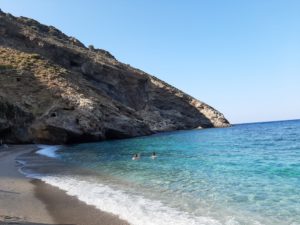
Different ways to reach the research subject
The main takeaway is the difference in accessibility of the outcrops. One of the things that drew me to Geology when I was back in Greece, was observing the numerous mountains and enjoying their beauty. In Finland, I learned that you have to work to uncover the most beautiful and important rocks.
The geology itself is different, but in my eyes at least, not as much. Greece is mostly covered in limestone, marble, greenschists or blueschists and quaternary sediments, but it has quite many interesting spots where magmatic activity is present. Greece has many appearances of my favourite rock complexes the Ophiolites as well as explosive intermediate to acidic volcanic rocks e.g. the ones from Santorini island, mother of epic explosions and magical sunsets.
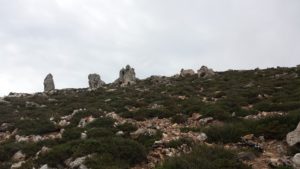
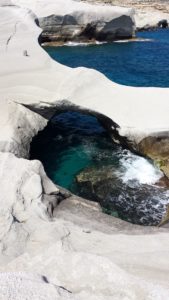
And what can I say about Finland. Covered from North to South with magmatic rocks, metamorphosed so many times, one can only be astonished by the sheer amount of geological history written on this bedrock. Greenstone belts and Archean granitoids, magmatic rocks of almost every type mashed together, hidden under glaciers and now uprising back to the surface. Simply majestic.
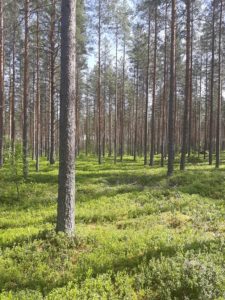
At the end of the day I learned to love both. I enjoy the ”grab your boots and climb the hill to that obvious outcrop” and the “let’s take a shovel, walk the forest, dig a little bit and see what we get” situations. Greece has this wild beauty and entertains the idea that Geology is happening right now. But exploring in Finland I can only describe as one of my favourite games, that is, treasure hunt. It doesn’t get more rewarding than walking through hard forest, finally reaching your set spot, taking off the moss and finding out that, yes that is indeed a pegmatite, full of large beautiful crystals. It’s a proud moment to make your own discovery. I remember a year ago, I was so happy that I discovered an outcrop by chance while doing fieldwork for my thesis. One of my professors Tapani Rämö told me then “your colleagues in Greece won´t understand why you are so happy, but we do, and we are as proud as you”.
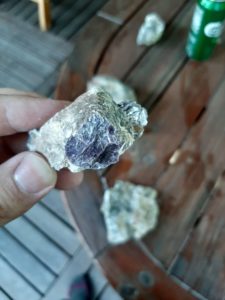
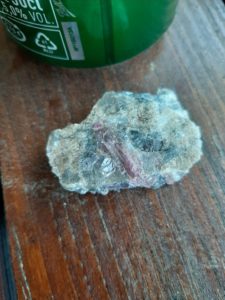
New concept of time
As I am ending this article, I remember another big shocking difference for me, perception of Geological time. When I was a freshman in Greece, the first concept of Geological time came when one lecturer said: “Forget your idea of time. When you talk Geology, anything less than 1 million years is less than a moment”. For a person who has never thought of this before that was a hard pill to swallow. The numbers we are dealing with, are so inhuman we cannot really comprehend their full meaning. But I started to get the grasp of it. I learned to deal with ages from around 30 to 300 million years (that was old in my book) and it felt understandable. And then I got to Finland. Now we are playing with ages up to around 3 BILLION years. The difference in Geological time was so much that I couldn’t understand it. In the end I decided to not care about it and talk about the numbers from a cold scientific view, otherwise my small human mind would lose it. I believe that was a smart thing to do.
At the end of the day however, I can’t help but think. Greece is a geological workshop in real time. It is evolving as we speak, ever moving to the South, accreting the last remnants of the Tethys sea as it marches on. In it´s wake it leaves volcanic eruptions, destructive earthquakes, unique landscapes and precious ores. And what about Finland? Under the thick forest, under the many layers of till and moraine the story is actually quite similar. This place has seen the formation and destruction of oceans, it was a very active part of the planet’s tectonism, and it’s also carrying the scars, magmatic rocks and ore for proof. Metaphorically speaking, Finland to me seems to be Greece´s much-much older brother but they both have been very important parts of the Geological history of Earth. So, in the end, are they even that different from each other?
